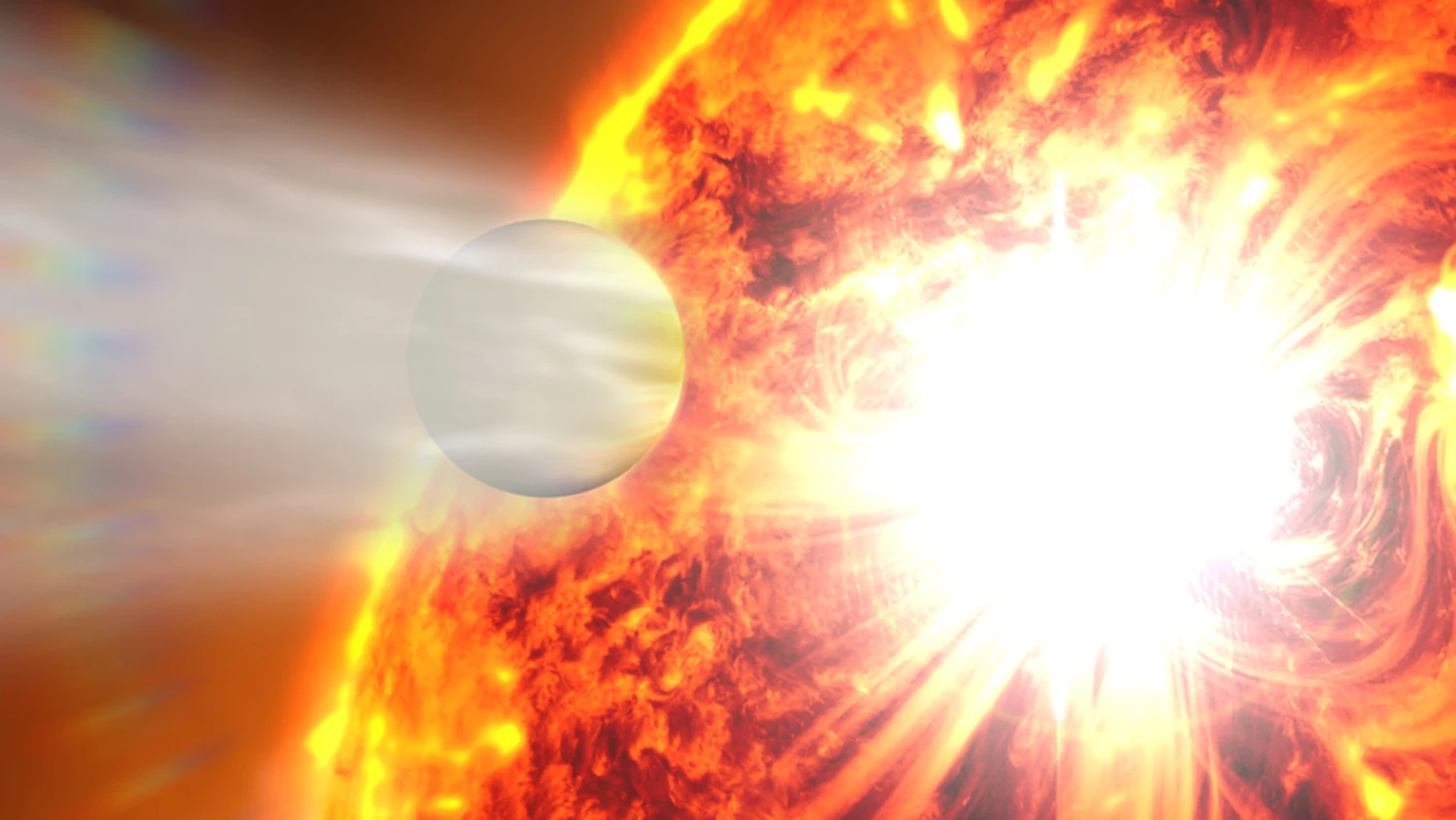
A stellar atmosphere is an awe-inspiring and intricate phenomenon that surrounds stars in the vast expanse of the universe. It is a captivating subject of study for astronomers and space enthusiasts alike. Understanding the composition, behavior, and properties of stellar atmospheres provides valuable insights into the life cycle of stars and helps unravel the mysteries of our universe.
In this article, we will delve into the fascinating world of stellar atmospheres and explore 15 intriguing facts that will leave you in awe of these celestial wonders. From the scorching temperatures of the sun’s corona to the mesmerizing colors of the auroras on other planets, we will uncover the incredible phenomena that occur within these cosmic envelopes.
So, buckle up and get ready to embark on a cosmic journey as we uncover the secrets and unveil the beauty of stellar atmospheres. Prepare to be amazed!
Key Takeaways:
- Stellar atmospheres are the outer layers of stars, emitting energy and creating stunning phenomena like auroras and solar flares. They vary in temperature, composition, and thickness, influencing the star’s appearance and behavior.
- By studying the spectrum of light emitted by stellar atmospheres, scientists can uncover secrets about a star’s age, composition, and future fate. These atmospheres also play a crucial role in shaping the surrounding interstellar space.
The stellar atmosphere is the outer layer of a star.
It is the region where the energy produced in the star’s core is emitted into space.
Stellar atmospheres are made up of various gases.
The composition can include hydrogen, helium, carbon, nitrogen, oxygen, and trace amounts of other elements.
The temperature of stellar atmospheres can vary significantly.
Some stars have atmospheres reaching temperatures of millions of degrees, while others are much cooler.
Stellar atmospheres emit light across the electromagnetic spectrum.
From radio waves to gamma rays, stars radiate energy in various wavelengths.
The colors we see in stars are influenced by their atmosphere.
Bluer stars have hotter atmospheres, while redder stars have cooler atmospheres.
Stellar atmospheres can experience powerful magnetic fields.
These magnetic fields can influence the star’s activity and release explosive solar flares.
The stellar atmosphere interacts with interstellar space.
Particles from the interstellar medium can interact with the star’s atmosphere, shaping its properties.
Stellar atmospheres can create stunning phenomena.
Auroras, solar prominences, and coronal mass ejections are just a few examples of the mesmerizing displays observed in stellar atmospheres.
Different types of stars have unique atmospheric characteristics.
For example, red giant stars have extended and tenuous atmospheres, while white dwarf stars possess thin and dense atmospheres.
Stellar atmospheres are influenced by stellar evolution.
As a star goes through different stages of its life, its atmosphere undergoes changes, impacting its size, temperature, and composition.
Stellar atmospheres are crucial for studying stellar evolution.
By analyzing the spectrum of light emitted by a star’s atmosphere, scientists can determine its age, chemical composition, and future fate.
Stellar atmospheres can generate powerful winds.
These stellar winds carry material from the atmosphere into space and shape the surrounding interstellar medium.
Stars with pulsating atmospheres are known as variable stars.
The periodic expansion and contraction of their atmospheres lead to changes in brightness, allowing astronomers to measure distance and study stellar properties.
The study of stellar atmospheres has led to breakthroughs in astrophysics.
Understanding the behavior and composition of stellar atmospheres has deepened our knowledge of stellar evolution, nucleosynthesis, and the formation of elements.
Stellar atmospheres vary in thickness.
Some star atmospheres can extend thousands of kilometers, while others may be relatively thin, depending on the star’s size and activity.
The stellar atmosphere is a realm of awe-inspiring phenomena and scientific discoveries. Exploring the diverse characteristics of stellar atmospheres enhances our understanding of the captivating universe surrounding us.
Conclusion
In conclusion, the stellar atmosphere is a fascinating and dynamic area of study within the field of astrophysics. From understanding the composition and temperature of stars to the complex processes that occur within their atmospheres, there is much to uncover and explore. The 15 intriguing facts highlighted in this article provide a glimpse into the remarkable nature of stellar atmospheres, showcasing their beauty and intricacy.Through ongoing research and advancements in technology, scientists are continuously deepening their understanding of stellar atmospheres. These findings not only contribute to our knowledge of the universe but also have practical applications, such as in the development of space exploration technologies and our understanding of other planetary systems.As we continue to unravel the mysteries of the universe, the study of stellar atmospheres remains a vital component. By delving into the depths of these cosmic atmospheres, we gain insight into the complexities of celestial objects and our ever-expanding universe.
FAQs
1. What is a stellar atmosphere?
A stellar atmosphere refers to the outer layers of a star, which emit light and heat. It consists of various gases, particles, and electromagnetic radiation.
2. How is the temperature of a stellar atmosphere determined?
The temperature of a stellar atmosphere is determined by factors such as the star’s size, age, and chemical composition. Scientists use various methods, including spectroscopy, to analyze the energy emitted by the star and determine its temperature.
3. How do scientists study stellar atmospheres?
Scientists study stellar atmospheres using a combination of ground-based observatories and space telescopes. They analyze the light emitted by stars at different wavelengths to understand their composition, temperature, and other properties.
4. Can we learn about other planets from studying stellar atmospheres?
Yes, studying stellar atmospheres can provide valuable insights into the composition and conditions of other planetary systems. By comparing the properties of different stars and their atmospheres, scientists can make inferences about the characteristics of exoplanets.
5. Are stellar atmospheres the same as Earth’s atmosphere?
No, stellar atmospheres differ significantly from Earth’s atmosphere in terms of composition, temperature, and pressure. Stellar atmospheres are primarily composed of hydrogen and helium, while Earth’s atmosphere is a mixture of nitrogen, oxygen, and other gases.
Stellar atmospheres are a fascinating subject, and understanding their intricacies can lead to a deeper appreciation of the Universe. Spectroscopy, a powerful tool for analyzing stellar atmospheres, allows astronomers to unravel the mysteries of stars and their composition. By studying the corona, the outermost layer of a star's atmosphere, scientists gain valuable insights into the dynamic processes occurring on the surface and beyond. Exploring these captivating topics further will enhance your knowledge of the celestial wonders that illuminate our night sky.
Was this page helpful?
Our commitment to delivering trustworthy and engaging content is at the heart of what we do. Each fact on our site is contributed by real users like you, bringing a wealth of diverse insights and information. To ensure the highest standards of accuracy and reliability, our dedicated editors meticulously review each submission. This process guarantees that the facts we share are not only fascinating but also credible. Trust in our commitment to quality and authenticity as you explore and learn with us.


